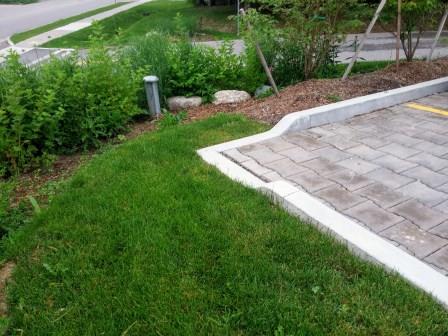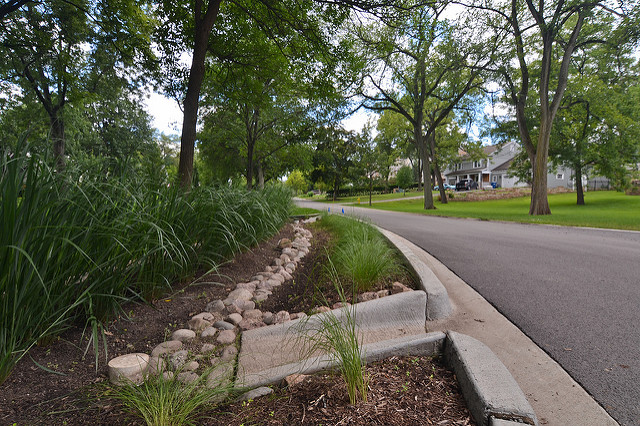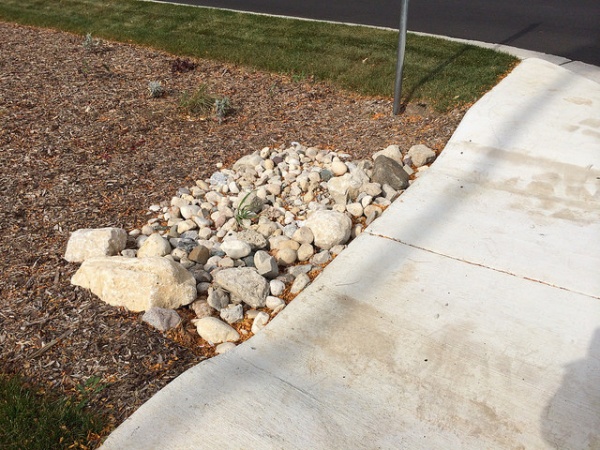Difference between revisions of "Curb cuts"
Jenny Hill (talk | contribs) |
Jenny Hill (talk | contribs) |
||
| Line 13: | Line 13: | ||
The proportion of water entering the bioretention cell under these flow conditions would be:: | The proportion of water entering the bioretention cell under these flow conditions would be:: | ||
<math>R_c=1-\left ( 1-\frac{3}{9.71} \right )^{1.8}= 0.48 | <math>R_c=1-\left ( 1-\frac{3}{9.71} \right )^{1.8}= 0.48</math> | ||
48% of the 0.08 m<sup>3</sup/s flow would enter the bioretenteion cell through the inlet as designed. | |||
==Curb cuts Gallery== | ==Curb cuts Gallery== | ||
Revision as of 01:23, 29 September 2017
Sizing[edit]
To completely capture linear flow travelling along a gutter perpendicular to a curb inlet, the inlet must be of width::
Where the intention is to capture only a proportion of the flow, the ratio of flow entering the curb inlet may be calculated::
Example[edit]
A curb cut of 3 m is proposed as an inlet for an offline bioretention cell receiving runoff from an adjacent roadway. The gutter and the curb are made from smooth concrete with Manning's 'n' = 0.013. The x-slope is 3% and the longitudinal slope of the road is 2%. The design storm produces flow of 0.08 m3/s.
The width of inlet to capture 100% of this flow is::
The proportion of water entering the bioretention cell under these flow conditions would be::
48% of the 0.08 m3</sup/s flow would enter the bioretenteion cell through the inlet as designed.
Curb cuts Gallery[edit]
Curb cut into a bioretention facility in Hinsdale, IL.
Decorative aggregate in the center of the facility reduces erosion and dissipates power inflow around the inlet area. A monitoring/maintenance well can be seen in the foreground.
Photo credit: CNTCurb cut into a bioretention facility in Brown Deer, WI.
Aggregate is used to reduce erosion around the inlet area.
Photo credit: Aaron Volkening






